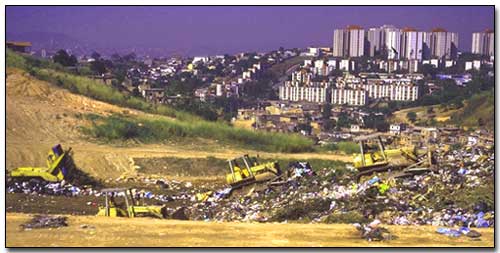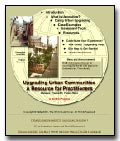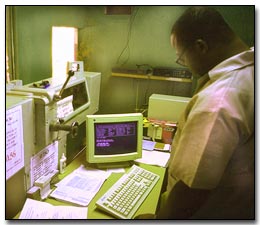 |
 |
|
This web site is for cities to initiate environmental management programs. It is targeted toward urban policy analysts, decision-makers, planners, and managers, as well as to the environmental community at large and international agencies.
Cities are recognized as the engines of economic growth, but the environmental implications of such growth need to be assessed and managed better. It is important for each city to identify specific priorities, policies, and actions needed to address the most immediate issues.
The material in this web site has been gathered from many years of practice by recognized authorities. The strategies and information have been successfully applied in many cities throughout the world. |
|
 |
Navigation throughout the primer is accomplished by clicking on the file folder tabs at the top of the page. The tabs will take you direct to the specific section indicated. To learn more about tab navigation, click here. There are also text links at the bottom of the page as another means to navigate to sections quickly. |
 |
While reading the main text you can use the ‘Quick Look-up’ that provides explanatory links in a separate window. The icon, like the one to left, is found on the footer bar at the bottom of each page. Just click on the book icon to bring up the window. You must click on the ‘Quick Look-up’ window to close it. |
|
|

|
Features of the web site
• Information is layered, progressing from overall summaries to detailed information. Complete articles are generally not included, and the user is directed to original sources for each.
• An intuitive format allows quick entry and facilitates finding of material.
• Examples drawn from practice from throughout the world provide up-to-date actual experiences. Examples are seen as important in understanding the process and context of programs.
• The web site material is usable in many forms: as a direct resource to be read from the web, and by printing desired sections. The design of the site has been adjusted to mitigate printing problems.
• Contributions are encouraged from practitioners. The information is continuously updated in order to keep up with emerging good practices. Click on ‘Feedback’ to access a direct input form.
• An animated slide show highlights the features of the site. Be aware: it is 550KB in size and requires that you have the Flash plug-in for your browser. It also may take a few minutes to load if you are connected to the site using a modem.
|

|
Credits
The prototype was prepared for the Urban Environment Thematic Group at the World Bank, headed by Dr. Carl Bartone. The key resources at this early stage of development were from publications from the Collaborative Working Group, an international partnership focused on solid waste management, and from the International Institute of Environment and Development (IIED) London, Dr. Gordon McGranahan.
The initial funding was from World Bank internal resources and DANIDA.
The prototype was prepared by the SIGUS Group - Special Interest Group in Urban Settlement - School of Architecture and Planning, MIT, directed by Reinhard Goethert. Web and CD design by Will Donovan.
Acknowledgments
|
Related Web Site
A companion web site offers detailed information on providing basic services in the context of urban slum improvement. It may be accessed at:
http://web.mit.edu/urbanupgrading |
 |
|
|
|
|
Technical notes
- The web site has been tested with browsers Explorer Version 4.0 and higher, and Netscape Version 3.0 and higher. It is optimized for Explorer and Netscape versions 4.0 and higher.
- The size of text is set for 12 pixels and cannot be adjusted by the user in their browser.
- The site has been designed with Arial typeface (font) for headings, and Times typeface (font) for text. Use of other typefaces may result in irregular spacing of text and graphics.
- You may encounter ‘.pdf’ (Page Description Format) which indicates a file needs to be downloaded for viewing. This is generally used for very large files or those with unique graphics. You will need Adobe Acrobat software which may be downloaded free from the web (www.adobe.com).
- You may also encounter ‘PowerPoint file’ which indicates a file needs to be downloaded. It can only be read using MicroSoft PowerPoint software.

|
|
|
The views and interpretations herein should not be attributed to the World Bank
or it its affiliated organizations or to any individuals acting on their behalf.
Copyright © 2000. The World Bank Group. All Rights Reserved.
|
|
|






